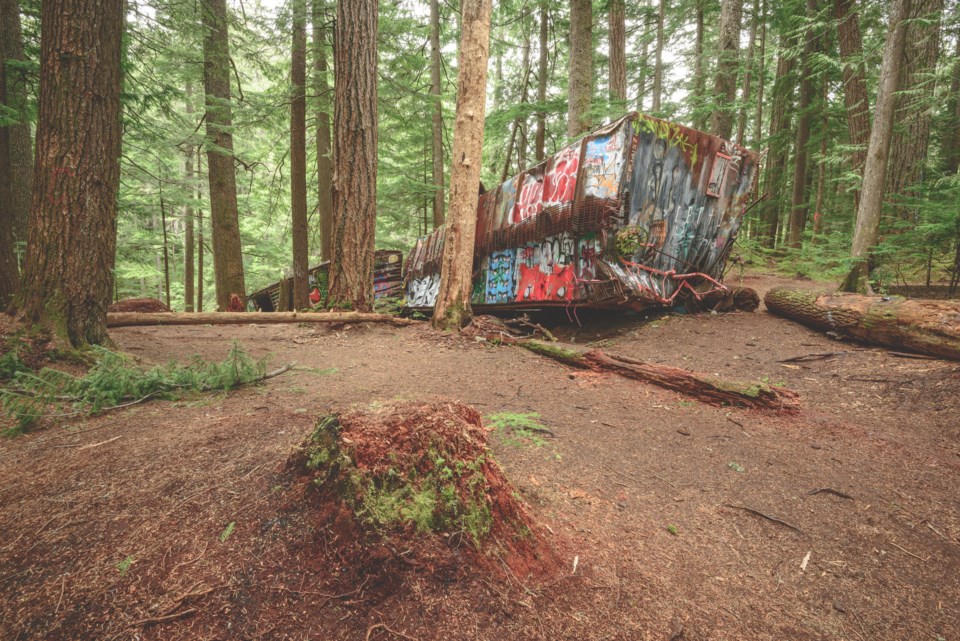In an effort to understand overtourism and its impacts, vis-a-vis the weekly traffic jams to and from Whistler every weekend, a lot of blame gets thrown around.
Some blame the Instagram effect as people post adventures on social media, leading to a Fear Of Missing Out mania that inspires all the FOMOs out there to go out and bag some adventurous selfies of their own. It’s not even about novelty, it’s about checking an invisible list to prove to yourself and others that you’re living your best life.
It’s shallow, but social media is increasingly how we’re defined these days—it’s how people know us—and there’s a certain amount of pressure to project something more interesting about yourself than your breakfast burrito. And what’s more interesting than doing things and going places?
Others point to the general dumbing down of adventures, with paved parking, public washrooms and easier trails to access areas that used to be a challenge to get to. Even the drive up the Sea to Sky Highway used to be a much more serious undertaking. If you build it, it turns out that they really will come, as we’ve seen over and over with Joffre Lakes, Train Wreck, the Riverside Trails, the Into the Mystic/Lord of the Squirrels trail system, the Sea to Sky Gondola, and so on. That’s not to say we need to stop building cool things, but maybe a few things need to stay difficult to preserve what they are.
Look at the Train Wreck wreck. Word got out. We built a bridge and trail to keep people off the train tracks. Then we built a parking lot because people were leaving their cars everywhere. Then we added garbage cans because people can’t hold onto their empty coffee cup for 30 whole minutes. Washrooms can’t be far behind at this point.
The area has been trampled and desecrated—there’s no other word for it—by people braiding trails, damaging trees, spray painting rocks and trees, and, most recently, crushing one of the rusted boxcars flat. The easier we make access, the more problems we create.
Then there’s what passes for culture and the fact that people are constantly bombarded by media screaming at them to Get Outside And Play. Car commercials are particularly selling the idea of open roads to people who will end up stuck in four-hour traffic jams to get home. While I do support the general “get outside” message, and in a sense have based my life around that idea, I also don’t have to get in my car and drive two hours to do it. I have the life I have because of the choices and sacrifices that I made, under no illusion that I could somehow have it all.
The future of this world depends on people reining in the restlessness that has been instilled in them and driving, flying and cruise-shipping less than we do now. Almost nobody is making much of a case for finding less impactful things to do in your own neighbourhood, or for adding things to those neighbourhoods so people don’t feel the burning need to escape from them every day off.
The “get outside” message has no doubt been fuelled by the housing situation and the hundreds of thousands of people being stacked into condos in all of our major cities. Of course you need to get outside when you live in a 700-square-foot box with a tiny patio you can fit all of three chairs on.
While all of these factors have contributed to the weekly swarm to and from Whistler, there’s another factor that always seems to get missed in these conversations—a population that’s growing in leaps and bounds.
The average population growth going back the last three decades is between two and three per cent annually for the Greater Vancouver Area. If that continues through the 2021 census, then that’s around 900,000 more people looking for things to do on the weekend than there were 30 years ago.
Our population is growing because the federal government—it really doesn’t matter who is in power—is doing everything it can to make it happen.
There are reasons for this, most of them economic. It creates a wider tax base at the bottom to support aging populations, it lets governments brag about per-capita GDP shrinking at a time when the total debt is growing, and it keeps housing and real estate—our biggest industry—alive.
But while the federal government has its reasons—all of which are debatable—the challenge of accommodating this growth has been left to cities that can’t keep up with housing or things for all those people to do. Very little of the new housing hitting the market is anywhere near affordable, which is the result of increased demand for land, materials and labour. Growth is expensive.
While overtourism sucks, it’s only a symptom of a much larger growth problem that will take more than pay stations at our lakeside parks to solve.




